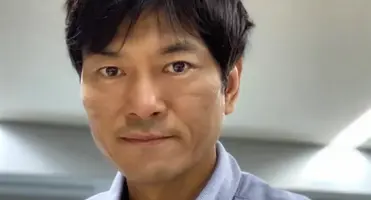At Gastech 2024, we’ll exploring the roles natural gas and LNG play in enabling and advancing the global energy transition. What strategic opportunities do natural gas and LNG offer compared to other fuel sources?
As a cleaner option to other fuel sources, natural gas and LNG are already enabling this transition to meet the world’s critical energy needs. The COP28 meeting this year reaffirmed the role that natural gas and LNG will play in the evolving energy transition. The lower carbon footprint and reliable supply contribute to a balanced energy mix, aiding in the sustainable evolution toward a cleaner energy landscape, and Air Products’ proprietary and leading position in LNG process technology and heat exchanger equipment continues to play an important role. We provide the most efficient processes in the industry and have been a pioneer in making electric drive (E-drive) LNG plants a reality. E-drive reduces on-site emissions for generating the refrigeration in LNG plants, and enables electricity sourced from renewables to power LNG production. We are also developing new ways to further reduce the carbon emissions of LNG plants by using hydrogen to fuel the gas turbines used to drive the refrigeration compressors. This reduces the carbon emissions because when hydrogen burns, no carbon dioxide is generated.
How are new technologies and innovations optimizing LNG production to meet the growing global demand for natural gas?
Advanced liquefaction processes and reliable equipment, with proven capabilities and efficiency, are key to optimization. Additionally, LNG equipment has an operational lifespan of decades, and over this time, we continue to enhance the equipment with new digital techniques to improve operation. These advancements not only improve efficiency but assist in stable LNG production along with further reduction of emissions.
We are seeing opportunities at all heat exchanger sizes in efforts to meet the demand for LNG. Air Products has supported an array of different construction strategies for our heat exchangers, from stick built to highly modularized. We expect to continue to see both diversity of train sizes and degrees of modularization, as customers’ individual project conditions and goals can require a variety of strategies.
Your recent Sustainability Report shared that in 2022 your industrial gases and technologies enabled your customers to avoid 86mt of CO₂ emissions, more than three times Air Products combined direct Scope 1 and Scope 2 emissions. What measures and technology can be put in place by developers to lower the carbon intensity of LNG production to meet sustainability goals?
In the process and equipment selection for LNG liquefaction, it is key to select the ones that are sized most appropriately for optimal efficiency and production. For example, large-scale facilities can be built using fewer trains for the smallest equipment footprint and a dual mixed refrigerant (DMR) process for the highest efficiency, improving the overall economics of the facility. Air Products’ DMR process is being leveraged on Coral South, the world’s first new-built ultra-deep water FLNG facility and the first in Mozambique, with a nameplate capacity of 3.4 million tonnes per annum. Early in 2024, the performance tests confirmed production above this capacity.
In addition to the above benefits, the reduced equipment count directly reduces carbon intensity. Coil wound heat exchangers (CWHE) use welded connections and this, coupled with the inherent dual containment nature of heat exchangers, significantly reduces methane emissions. Additionally, with fewer trains, there are fewer connections, decreasing the number and likelihood of potential hydrocarbon leak paths.
What role does technology play in increasing cost competitiveness of LNG projects?
Technology plays a pivotal role in enhancing the cost competitiveness of LNG projects. Advanced technologies optimize various stages of the LNG value chain, from exploration and extraction to liquefaction and transportation. For liquefaction, innovations such as the modular design of CWHE and digital technologies are adding schedule and operational efficiencies. Moreover, Air Products is focused on continuous advancements in engineering, design, and manufacturing of equipment and high-efficiency liquefaction processes to optimize production, reduce long-term cost, and help deliver cleaner LNG to global markets.
You and your fellow Governing Body members are currently in the process of peer-reviewing the technical and commercial abstracts submitted through the Gastech Call for Papers. What trends and insights are you hoping to see emerge across the Technical and Commercial conference at Gastech 2024?
As we’ve already discussed, LNG is enabling the energy transition as a clean, sustainable energy source. Finding ways to improve efficiency of production, longevity of equipment, and further reducing emissions continue to be areas of focus. I look forward to hearing the insights from the diverse industry experts participating in the conference.
What are you most looking forward to at Gastech 2024?
Gastech provides the opportunity for the Air Products team to again connect with our customers, partners, and industry experts. Hearing firsthand about key themes, trends and issues shaping our industry is invaluable. The new categories in both the technical and commercial categories provide for additional thought leadership throughout the energy industry.































